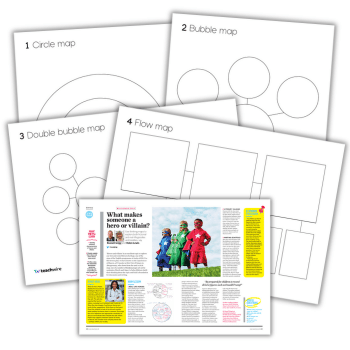Introduce Children To Elements Of Risk Slowly; They Need To Feel Safe

A Q&A with Fiona Bland, Early Years Adviser at NDNA, on risky outdoor play and activities, and children who may not be ready to challenge themselves just yet

- by Fiona Bland

Why is it beneficial for young children to play outdoors? The outdoor environment is always changing and keeps children close to nature. They can observe the different seasons, let off steam and enjoy the fresh air. Because there is more space to move, they can hone their motor skills, build their muscles and indulge their natural curiosity. It promotes development across all areas of learning, in different ways to learning indoors.
What are the rules with outdoor play? There are no rules above making sure children are safe. They should be able to play outdoors each day regardless of the weather. A major restriction can be staff’s reluctance to go outside in the cold and wet – and parents can be unhappy about foul weather play.
Of course children should be dressed appropriately – in wellies, waterproofs or sunglasses, hats and sun cream as required. In the case of extreme sub-zero temperatures or a heatwave, time could be limited. Let children experience what rain and snow feels like, to watch what happens to snowflakes in their hands and how the wind moves leaves in the trees.
How is risky play defined, and why is it good for young children? Risky play is when children push themselves to the limits of their capabilities. They should be allowed to explore the environment, challenge themselves and learn to manage their own risk as this is a lifelong skill we use every day. Risky play is often physical, but also includes taking emotional risks, such as conquering fears and meeting new friends, and mental challenges such as learning a new routine or overcoming a fear.
Beloved children’s author Roald Dahl wrote that “the more risks you allow children to take, the better they learn to take care of themselves”. Life is full of risk and children must learn to manage it for themselves. They need to have the experience of, say, riding too fast on their scooter and taking a tumble, to understand the outcome. They need to know what can go wrong in a safe environment to reduce the chances of a future significant injury.
What must be in place before introducing risks? Risks must always be weighed against the benefits of the activity. For most activities, the benefits outweigh the risks. Ask yourself, what will the children get out of this activity? Staff must be confident to allow children to push themselves to their limits. They need to know their children very well and make sure all activities and environments are risk assessed and appropriate for individual children.
How detailed must a risk assessment be? Risk assessments should be in place to reduce potential risk and highlight what could happen in certain situations. What measures can you put in place to minimise these risks? Look at staffing ratios, staff training or changing the environment; reduce the number of children in the group activity or move an obstacle.
Involve the children in developing risk assessments. Depending on their age, ask them what the dangers are in doing a certain activity. How can they prevent these?
What if parents are worried about risky play? This is one of the biggest challenges for nurseries. Explain why you will be lighting a fire, for example, and what measures you have in place to keep the children as safe as possible. Tell them what the children will be learning and how. Put on a parent workshop and talk about your activities, share your risk assessments and benefits. Show them photographic or video evidence so they know exactly what they will be doing. Send home further resources that set out your ethos. Most parents will support your way of thinking, but it’s important to explain what your nursery’s approach is on their first visit – if they aren’t comfortable with your ethos, maybe this isn’t the place for their child.
How do you control risk to be age appropriate? Tailor activities to include different levels of challenge for individual children. A fallen tree or large branch can provide endless learning opportunities and challenge for different age groups/skill level – from climbing, exploration and chopping, to leaf collection, whittling and even bug hunting.
It’s important to know your children well. What is their skill level? Work with parents to find out what they do at home and how used they are to challenging play. Do their parents take risks? If they aren’t usually allowed to stretch themselves, they will be less likely to be ready at nursery.
NDNA’s ‘Outdoors and risky play’ course gives practitioners the skills to provide an outdoor environment in which children of all ages can push themselves and have rich learning opportunities. Key topics include supporting children to take calculated risks and risk assessing your environment. Find out more at ndna.org.uk/training. NDNA’s publications Fun for all Seasons, Outdoor Play, and Brave Boys are available from ndna.org.uk/shop. Browse resources for Child Safety Week.










